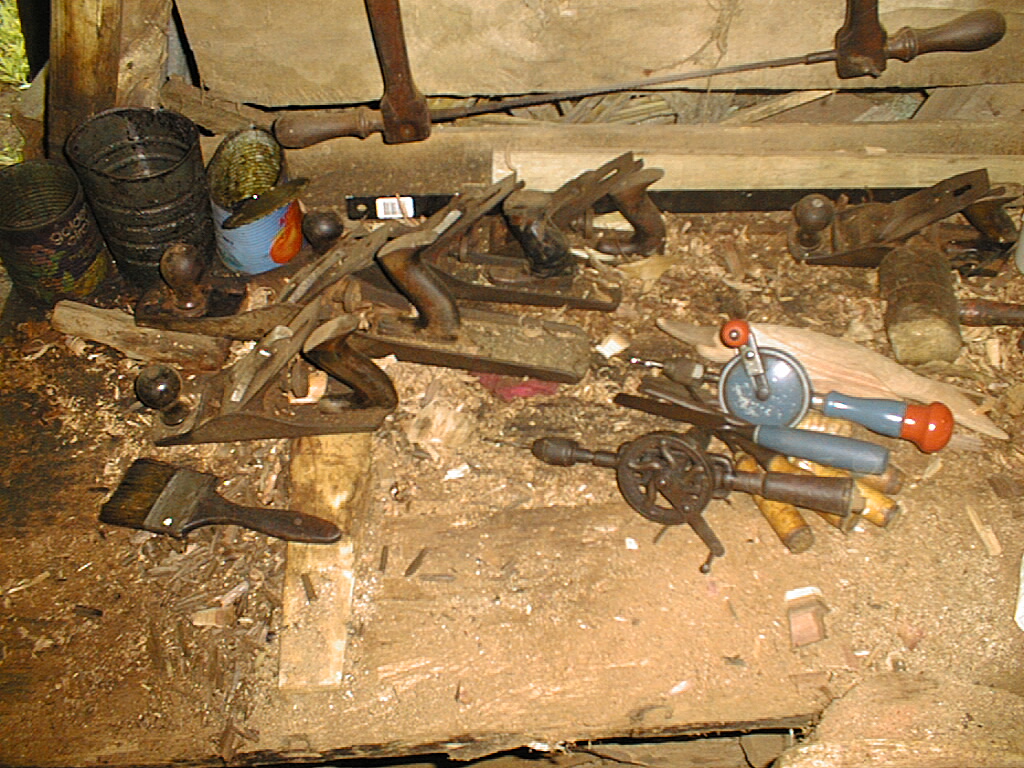Some detritus
Martin Gibbs


Archaeology is grounded in the idea that the human past is discernible through its detritus; that the materiality of past human activity encodes culture and economy, including both deliberate strategies for existence and inadvertent consequences. Archaeologists generally embrace the possibility that this materiality both transcends and complements documentary and oral histories, potentially providing an independent truth against the limitations and ambiguities of these other narratives. However, while its concern with landscapes, sites, and objects is in many respects a mechanism for distinguishing the discipline from its cognates, its remove has never been an absolute, with archaeology seeing itself as much as a form of anthropology as of history.
At the same time, this does not mean that it is insensitive to the non-corporeal and the cognitive, with these being as much drivers of past behaviour and culture as any prosaic economic or environmental forces. Perhaps more than most disciplines, archaeology is rife with internal tension thanks to a disciplinary ‘spectrum’ that ranges from hard-nosed positivist science through to phenomenologists, bound only by its attachment to the physical.
To paraphrase a popular handbook aptly titled Bluff Your Way in Archaeology (Bahn 1989), archaeology is like the Devil’s jigsaw puzzle, as you don’t know how many pieces are missing, most of them are lost forever, you can’t cheat and look at the picture, and it is a project that will never be finished. Weaving the literal fragments of the past into a whole narrative is often dependent on processes of analogy to better-known examples, as well as the abstraction of models.
Accordingly, in the absence of substantial material evidence, Pitcairn Island comes into focus instead as a sort of imagined island laboratory, generating questions about its own past, but also hopefully providing insights which can be applied elsewhere, especially in the Pacific world. A large part of this is reliant on the juxtapositions of the island’s pre-Bounty, and pre-historic, deeper past of Polynesian colonisation and abandonment with its second occupation, and temporary abandonment, by the people that arrived with Bounty.
Pitcairn Island is of archaeological interest due to colonisation (the processes by which people move to and inhabit new places), adaptation and invention (how people change themselves and their environment), lifeways (economy and society), connection (trade, exchange, mobilities), contact between cultures (domination, resistance, hybridity) and collapse (and death and abandonment).
Archaeological analogy suggests that the island might be conducive as a model, or perhaps even a thought experiment, for the processes of Pacific island colonisation. The arrival ofBounty, with its complement of men, women, plants, animals, and material culture, arguably provides us with insights applicable to the experiences of the original Polynesian immigrants, or, indeed, other Polynesian voyagers and colonists elsewhere. Of course, the reality is that for the Polynesian members of Bounty, the existing plant resources and signs of the preceding occupation shifts the narrative from one of encounter with a ‘naïve’ landscape to one of reactivation of existing and perceptible resources and systems, even if these were not evident to the European members of the group. Concerns over the dangers and fallacies of appropriating insights from one context into quasi-functionalist analogical frameworks for understanding a broader range of situations, especially those in a deeper past, have been raised by many others for decades.
On a somewhat safer analogical footing, for those with an interest in the European side of the Bounty story from which the main documentary evidence and perspective of these colonisation processes might be derived, Pitcairn Island might be read as a real-life ‘Swiss Family Robinson’, where the ship provides a warehouse of homeland resources with a gradual process of ‘civilising’ a landscape. However, a critical reading of that characterisation of the island’s second settlement, and our awareness of archaeology’s fetishisation of the European colonial arrivals, instead prompts us to question the operating assumptions of archaeological analogy itself. Can the arrival of people with the Bounty truly be seen as either a Polynesian or European colonisation, or should it rightly stand as a very particular form of cultural hybrid, where engagements with landscape, place, architecture, object, and practice all inhabited a negotiated space?
Pitcairn Island abets other analogies and conjectures, too. Can it be viewed as a site for understanding the pragmatics of life, economy, and connection on small islands? Much of the archaeological research has involved itself with analyses of when Pitcairn Island, usually bundled with Henderson Island, was occupied, the nature of its subsistence base, and cultural similarities and connectedness via migration and trade with other islands. Pitcairn Island potentially acts as a model for abandonment. It is one of the ‘mystery’ or ‘mysterious’ Pacific islands which was vacated after centuries of occupation, with no obvious historical driver.
For all of what has been framed above, the amount of actual archaeological investigation on Pitcairn Island has been passingly small: partial surveys of the landscape and sites, a few cubic metres of excavation, stories built on stories. The archaeological heart of Pitcairn Island still awaits. In the meantime, what has perhaps been uncovered instead are the structures and assumptions that guide the discipline’s reasoning about and interest in the material past. Pitcairn Island is, for archaeology, at present most interesting as a site of reflection, an assemblage of our archaeological attentions and preoccupations.


* This article is a rewritten version of Gibbs’ section published in Adrian Young et al. 2021. ‘When Margins are Centres: De-ranging Pitcairn Island’s place in Pacific scholarship’, Journal of the Polynesian Society, 130(3): 197-226. Adrian Young’s sharp editing skills in Gibbs’ section in the 2021 article are noted.